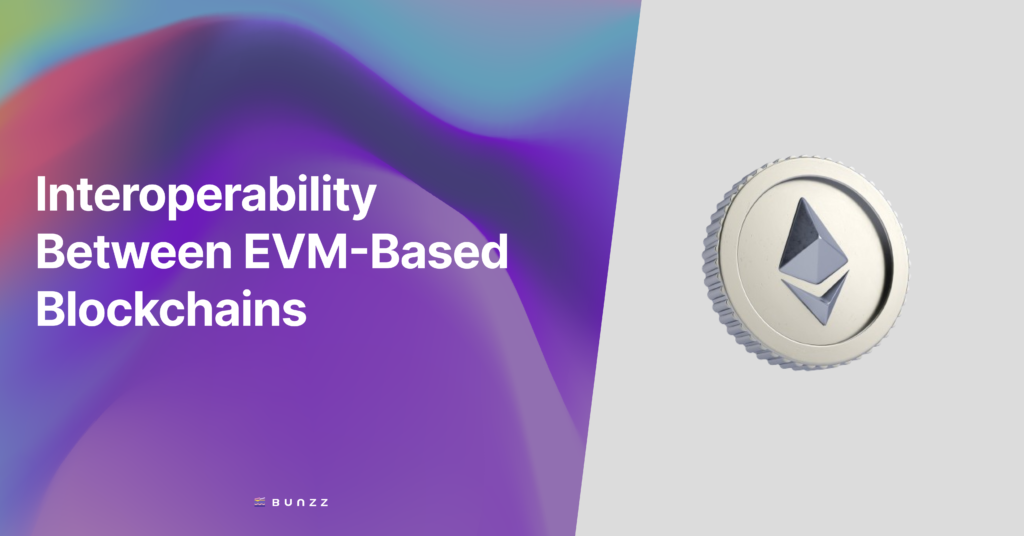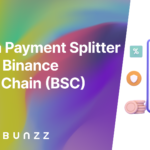The blockchain industry is a bustling ecosystem thriving with innovation. However, one major hurdle stands in the way of a truly seamless experience: Interoperability—the ability of different systems to work together. Blockchains, by design, often operate in isolation, hindering the free flow of data and assets between them, which creates a significant obstacle to their wider adoption.
EVM (Ethereum Virtual Machine) compatibility is a beacon of hope for interoperability within the blockchain world. It allows other blockchains to adopt the Ethereum standard for smart contracts, essentially speaking the same language.
In this article, you learn more about interoperability between EVM-Based blockchains and how they provide a more interconnected future where applications and assets can move freely.
Why EVM Compatibility Matters
Ethereum, the pioneering smart contract platform, boasts a vast developer ecosystem and decentralized applications (DApps). However, it also needs help with scalability issues, leading to high transaction fees and slow processing times—a problem EVM-compatible blockchains were designed to solve. These chains, like Avalanche, Binance Smart Chain (BSC), Fantom Opera, and Polygon, offer faster transaction speeds, lower fees, and, in some cases, greater scalability than Ethereum.
EVM compatibility allows developers to use the existing Ethereum developer tools and codebase, significantly reducing development time and cost. This fosters innovation and enables developers to build DApps seamlessly interacting with other EVM-compatible chains. For users, EVM compatibility translates to a wider range of choices for deploying and interacting with DApps, fostering a more vibrant and interconnected DeFi (Decentralized Finance) space.
Challenges to Achieving Interoperability
Unlocking the full potential of the interconnected blockchain ecosystem hinges on achieving seamless interoperability. While the benefits of interoperability are undeniable, facilitating the frictionless flow of data and assets across these networks presents several significant challenges. Let’s consider some of these challenges below:
1. The Consensus Conundrum
The fundamental roadblocks to interoperability lie in the very foundation of each blockchain: its consensus mechanism. Blockchains rely on these mechanisms to ensure all participants agree on the validity of transactions. Popular options include Proof of Work (PoW) and Proof of Stake (PoS).
However, each mechanism’s specific details and security assumptions can differ significantly. This heterogeneity creates a challenge for interoperability solutions to bridge the gap and ensure smooth transaction verification across contrasting consensus models.
2. Securing the Interconnected Realm
Security is necessary in the blockchain world, and interoperability solutions introduce a new layer of potential vulnerabilities. A single fault in the armor of an interoperability bridge could lead to devastating consequences, like stolen assets and shattered trust in the entire ecosystem. Devising robust security measures and constantly patching vulnerabilities is crucial to safeguard cross-chain transactions and maintain user confidence.
3. The Standardization Struggle
Achieving true interoperability requires a degree of common ground among blockchains. Currently, a need for standardization exists in how blockchains handle transactions, smart contracts (self-executing code on blockchains), and data. Establishing universally adopted standards for data formats, communication protocols, and smart contract execution is an ongoing and complex process but a necessary one for seamless interoperability.
4. Governance
Each blockchain operates under its governance model, which dictates how decisions are made, and upgrades are implemented. Effectively managing interoperability requires establishing mechanisms for coordinating upgrades, resolving disputes, and navigating the diverse governance structures of different blockchains. Therefore, by acknowledging and addressing these challenges, developers and innovators can pave the way for a truly interconnected future for EVM-based blockchains.
Solutions for Interoperability
The diverse nature of the blockchain ecosystem creates divisions of functionality, hindering the seamless flow of data and assets. Fortunately, a vibrant community of developers is tackling this challenge head-on, proposing and implementing various solutions to bridge the gap between EVM-based blockchains. In this section, we will explore solutions for interoperability.
1. Cross-Chain Bridges
Cross-chain bridges act as vital connectors between different blockchains. These bridges operate by locking assets on the source chain and simultaneously minting an equivalent representation on the destination chain. However, this ensures a constant total asset supply across both chains.
2. Interoperability Protocols
Interoperability protocols like Polkadot employ a central relay chain that acts as a communication hub, connecting multiple specialized parachains. Think of the relay chain as a central information exchange and the parachains as specialized departments within a company, all connected for efficient collaboration.These protocols provide a robust framework for building a truly interoperable blockchain ecosystem.
3. Atomic Swaps
Atomic swaps offer a novel approach to exchanging assets between blockchains without relying on a central authority. An atomic swap, powered by smart contracts, ensures that the trade either happens entirely on both chains or not at all. However, users will not experience the risk of one party completing the transaction while the other reneges.
4. Layer 2 Solutions
Layer 2 solutions, such as Optimistic Rollups and zk-Rollups, are crucial in enhancing interoperability by unclogging the congested highways of blockchain transactions. These innovative solutions process transactions off-chain, significantly increasing speed and lowering costs. By integrating Layer 2 solutions, different blockchains can achieve smoother interoperability by facilitating faster and cheaper cross-chain transactions.
5. Middleware and APIs
Building cross-chain applications can be a complex task. Middleware solutions and APIs act as helpful intermediaries, abstracting away the technical complexities of interoperability. These tools provide developers with user-friendly interfaces and functionalities, allowing them to focus on building innovative applications rather than wrestling with the underlying technical challenges. Projects like Chainlink, for example, offer decentralized oracles that connect smart contracts with external data and other blockchains, further facilitating smooth interaction between different blockchain ecosystems.
Prominent Players in this Space
The landscape of EVM-compatible bridges is dynamic and constantly evolving to meet the growing needs of users and developers. Here’s a closer look at some of the prominent players in this space:
- Anyswap: A decentralized exchange (DEX) protocol that doubles as a bridge, facilitating seamless asset transfers across many blockchains. Users can use Anyswap to swap tokens between Ethereum, Binance Smart Chain (BSC), Polygon, Avalanche, Fantom, and other leading networks. Its decentralized nature fosters trust and transparency, as no single entity controls the bridge infrastructure.
- Multichain: This bridge, previously known as Poly Network, has become a major player in the interoperability game. With a primary focus on bridging the gap between Ethereum and other blockchains, Multichain allows users to transfer a wide range of assets, including tokens, stablecoins, and non-fungible tokens (NFTs). Its user-friendly interface and support for many tokens make it a popular choice for those seeking easy cross-chain functionality.
- Binance Bridge: Built and operated by the cryptocurrency exchange giant Binance, this bridge allows users to transfer assets between Binance Smart Chain (BSC) and other blockchains supported by Binance. The bridge focuses on Binance’s robust infrastructure and reputation, offering a convenient solution for users already within the Binance ecosystem. However, similar to Multichain, Binance Bridge operates as a centralized service, placing control over the bridge infrastructure in Binance’s hands.
- Wormhole: This high-speed, decentralized bridge stands out for its innovative approach to security. Wormhole utilizes a novel token model called “guardian tokens” to incentivize a network of validators who secure the bridge. Moreover, the distributed security model aims to provide high trust and resilience against attacks. Additionally, Wormhole boasts impressive transaction speeds, making it an attractive option for users seeking a fast and secure cross-chain experience.
What to Expect
EVM compatibility is a powerful feature for unlocking interoperability within the blockchain space. However, the journey towards true interoperability doesn’t end with EVM compatibility. Continued exploration of interoperable protocols and standards that bridge the gap between different blockchain architectures will be essential for creating a truly seamless blockchain future.






